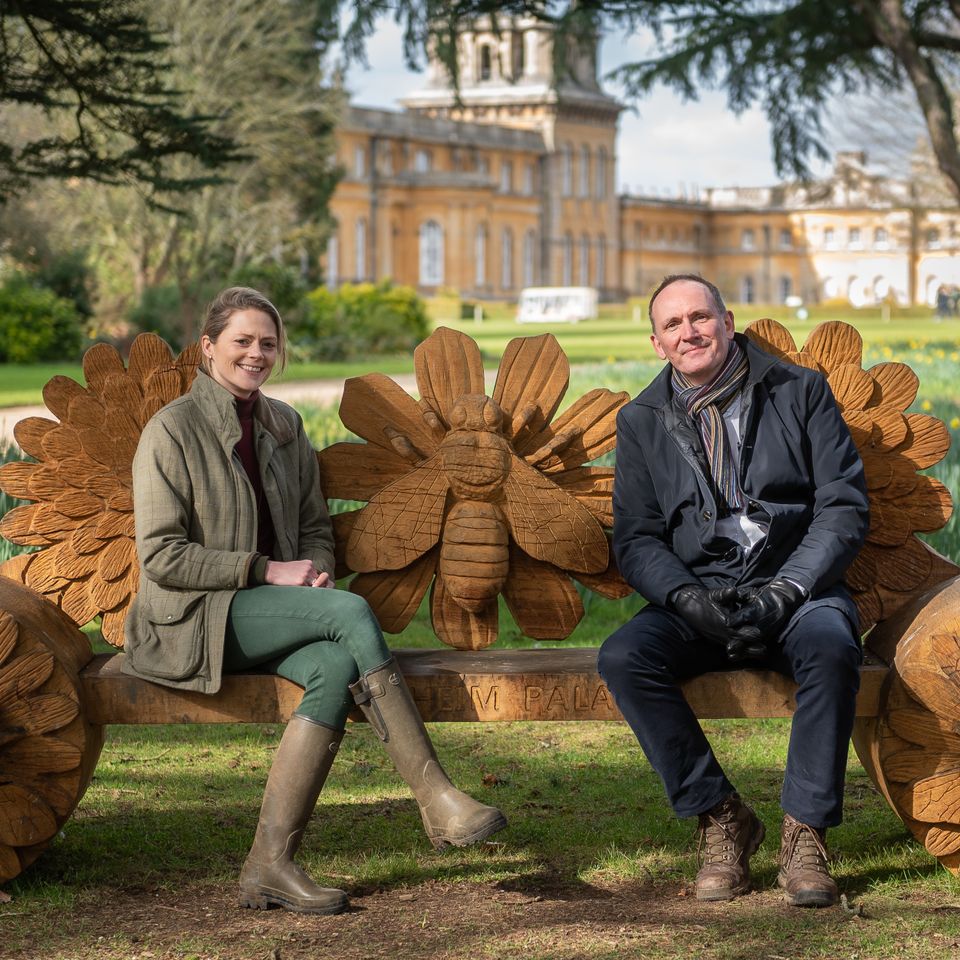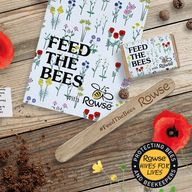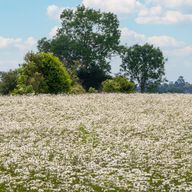
Providing an abundance of nectar rich flowers from early spring right through to the end of foraging season in October has never been more important. Without enough natural flora, our pollinators will struggle to survive. And without these pollinators, we’d struggle to thrive.
Together with our Oxfordshire neighbours, Blenheim Palace Estate, we’ve started a major conservation project to create sustainable nectar sources, as well as introducing new habitats, for our beloved, buzzing honeybees, and other insect heroes, like bumble bees, solitary bees, moths, butterflies, hoverflies, and beetles too!
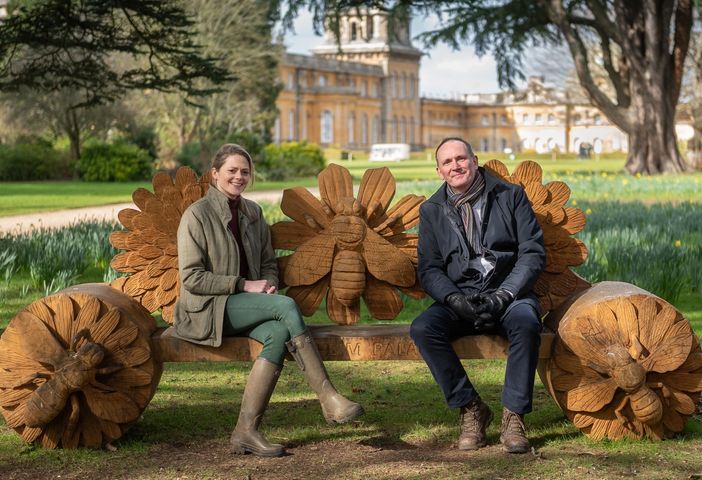
The shocking facts
Did you know over the past century in Britain, we’ve lost almost 92% of our wildflower spaces and over half of our natural hedgerows?
By building new homes, expanding businesses and transport links, our man-made world is taking over natural habitats at an alarming rate!
That is why with our friends at Blenheim we plan to enhance habitats for our local pollinators over the next 5 years.
What we’ll be sowing and growing
There are dozens of wild bee colonies living in the ancient woodland at Blenheim Palace Estate. Not only do we want to serve them up a flowerful feast, but we hope to invite new pollinating insects to the area too; ultimately creating a nectar-rich haven for as many species as we can!
Across 50 acres of land, we’ve sown more than 70 different species of native wildflowers, including oxeye daisy and meadow buttercup.
We’re not stopping at colourful blooms either. We’re also going to be planting a whopping 124 miles of hedgerows. We couldn’t forget about nesting birds, hibernating hedgehogs and other small, countryside mammals when creating homes for pollinators now, could we?
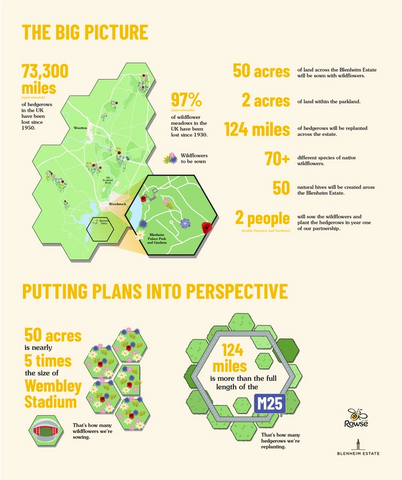
Our big goal
We hope that this leading-edge project will demonstrate what’s possible and will inspire and influence other big landowners and farmers, as well as the general public to Feed The Bees.
You can learn even more about the project by walking the network of grass routes across the Blenheim Palace Estate. Come and see the very first seedlings sprout for yourself in this summer!
